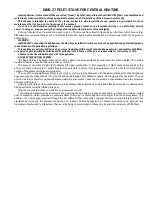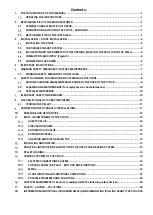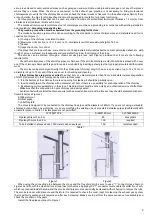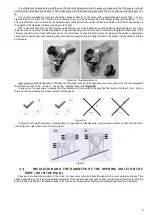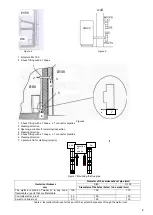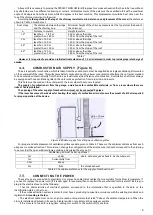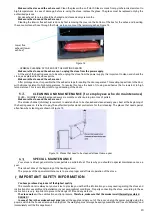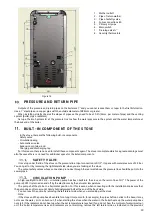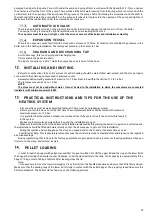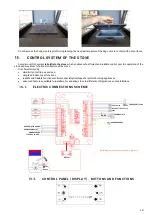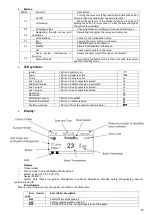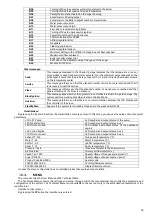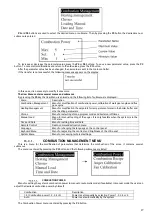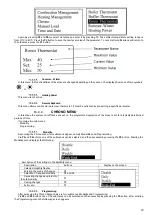
4
It is strictly recommended to avoid the use of horizontal extensions, and if necessary, make sure that the pipe is not bent
but that it has the slope of at least 5%. The horizontal part of the drain flue pipes must not in any case exceed the length of 3
m.
It is not recommended to connect the smoke exhaust directly to the stove with a horizontal part longer than 1 m. See
Figures 4,5,6 and 8. After the T branch it is necessary to set up a vertical extension of Ø 80mm in length for at least 1-1.5 m,
and only after that to move to the horizontal extension of Ø 80mm and a vertical extension of Ø 80 or Ø 100mm, depending on
the height of the flue pipe (chimney) as shown in Table 1.
When connecting the stove to the chimney using fittings, one must install a knee with a hole for cleaning (Figure 2a). Using
the knee with an opening for cleaning allows for regular cleaning, without the need to dismantle the pipes. Drain gases in the
chimney connector are under mild pressure so it is necessary to check that the cover for cleaning the ashes is completely
sealed and to seal it after each cleaning. Please make sure everything is properly returned to its place, and check the condition
of the seals.
Figure 2a: Cleaning elements
Ideal vacuum primarily depends on the absence of barriers such as narrowing and/or corner connectors. It is recommended
that the knees are 30°, 45 °, and 90 °.
Knee at 90 ° shall be three-fold (Figure 2b).
In any case, it is necessary to ensure that the initial part of the vertical flue pipe has the length of at least 1.5 m. Only in
this way can you achieve the proper removal of flue gases.
Figure 2b:
In Figure 3, left, we show how a complete (top) is supposed to look like when you have two chimneys next to each other,
and in Figure 3, right, how not to do the end part.
Figure 3
INSULATION AND THE DIAMETER OF THE OPENING (HOLE) ON THE
ROOF (OR IN THE WALL)
Once you determine the position of the stove, it is necessary to make a hole through which a smoke pipe must pass. This
varies depending on the type of installation, diameter of the exhaust gas pipe (see Table 1) and the type of wall or roof for the
tube to pass. See Table 2. Insulation needs to be made out of mineral wool with a nominal density greater than 80 kg/m
2
.


